By: Rachel Shoemaker, Interpretive Ranger for Northern Region Parks
“What IS that!?”
My friend stopped so abruptly that I nearly bumped into her.
“What is what?”
I asked, looking around frantically, trying to see what she was seeing. I looked down at the trail where she was pointing and gazed upon a creature that would consume me – er, consume my attention rather – for at least the remainder of the hike if not longer.
The creature before me resembled a small monster that hadn’t seen the light in days. It looked as if it had just emerged from the deep, dark recesses of the earth. It had a clump of moss stuck to it and bits of dirt clinging to its’ moist, stout body. Looking past these interesting details, I observed two irregular rows of yellow spots set against the black backdrop of its skin.
“A SPOTTED SALAMANDER! IT’S A SPOTTED SALAMANDER!”
I exclaimed. I looked up at my friend who playfully scoffed at my overly exuberant reaction to a salamander. Knowing we were on a tight schedule in order to make it back to Concord for Taco Tuesday with a friend (priorities), I told her to go on without me and I’d catch up. I took a few pictures and stared at it with a huge grin on my face, just taking it all in.
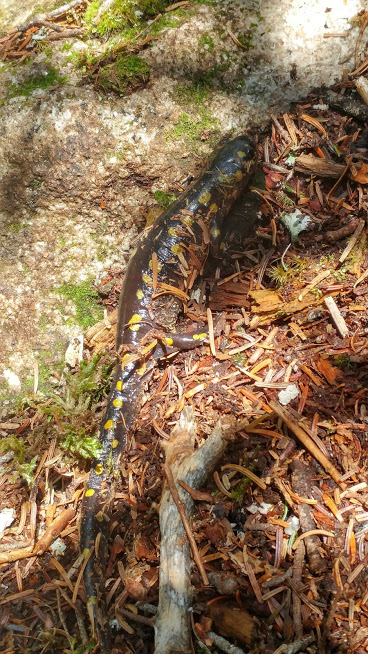
Spotted salamanders are really quite common, so why the hype you ask? They spend most of their time hiding underneath objects such as rocks and logs, emerging only at night to feed and mate in the spring. Just because they’re common doesn’t mean you’ll see them often!
My affection for salamanders can be traced back to field trip season, the portion of the SCA NH AmeriCorps program that followed teaching environmental education to 3rd through 5th graders in the Manchester and Concord region of the Merrimack Valley. The children we taught came out for a field trip to Bear Brook State Park and participated in a variety of hands-on activities. One such activity was called the ‘Salamander Log Roll,’ which speaks for itself. In order to teach these children, the Interpretive Rangers had to familiarize ourselves with the local species of salamanders – one of them being the spotted salamander. More often than not, we found red-backed salamanders on the field trips, so seeing this spotted salamander – on top of a mountain – was a treat!
Learning the local species of salamanders wasn’t the only information I had to gather to become a semi-competent ranger. Other examples include tree species identification, animal tracks, and a whole slew of information regarding a variety of other natural and cultural subjects. The time I’ve spent researching these subjects for program development coupled with delivering these programs on nearly a daily basis has resulted in what I call a ‘complete interpretive immersion.’
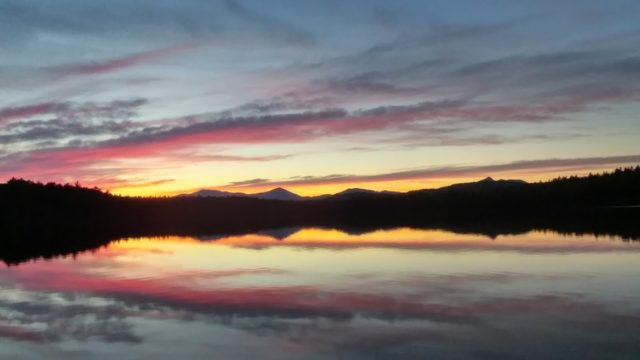
Ever come home from a long day of work only to find that you can’t get work off your mind? That’s how it is for me – my work follows me everywhere. On my days off I can’t go without noticing something that I’ve learned or seen on the job.
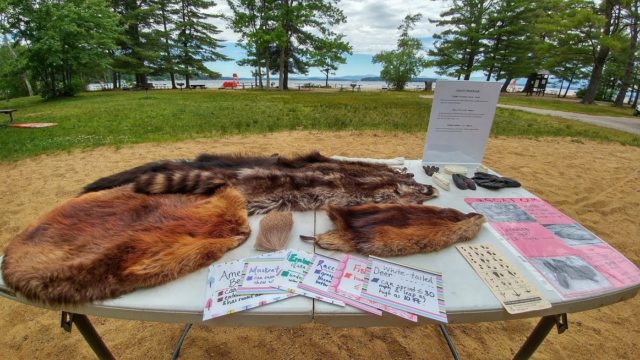
Huffing and puffing my way up a mountain, I distract myself from the physical exertion by glancing around at the beautiful trees that surround me. Ah, I think – there’s “spiky spruce.” This thought stems from a mnemonic device I use to help program participants remember and distinguish different tree species.
Another prime example comes from another hiking adventure – I know, shock, right? I had stopped at the top of an incline to take in the incredible views behind me when suddenly, a fox comes trotting along at the base of the incline. It pauses, looks at me for a moment, and then continues on its way. Amidst the excitement I felt at seeing this fox – a wild animal, at that! – while out on a mountain, I recognized that I was thinking like an Interpretive Ranger. The tip of its tail is white – it must be a red fox! When I teach my fur tabling program ‘Wildlife Fur-ensics,’ I distinguish the gray fox from the red fox by simply pointing out the differences in the coloration at the tip of the tail – black for the gray fox and white for the red.
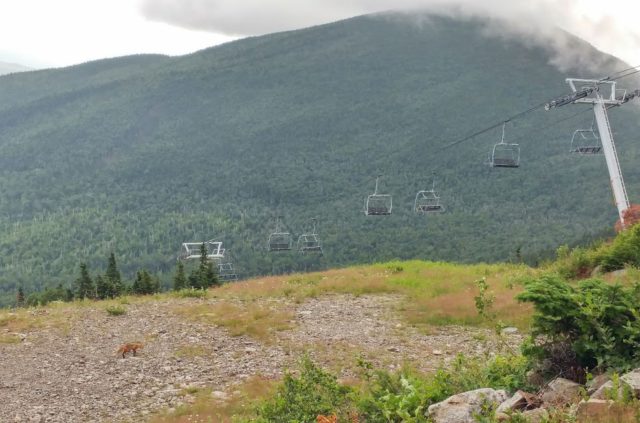
Any northerner reading this will either smile, scoff, roll their eyes, or all of the above at what I’m about to say. On another hike, I was almost back to the trailhead when I noticed distinct tracks in the path before me, which hadn’t been there before! This born-and-raised North Carolinian had just seen her first-ever moose tracks. There were two sets – one was sizeable, but the other was huge! Of course, I thought back to my ‘Wildlife Fur-ensics’ program and how excited I was to be able to share this personal story and pictures with the children!
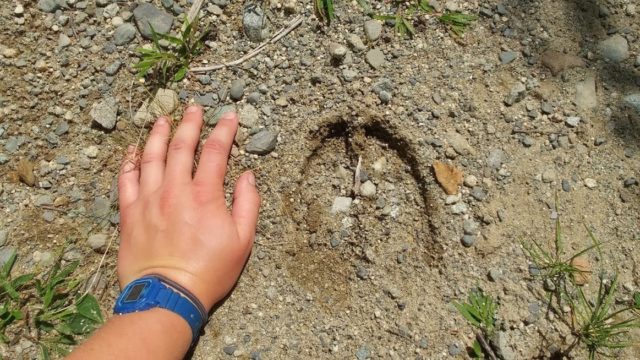
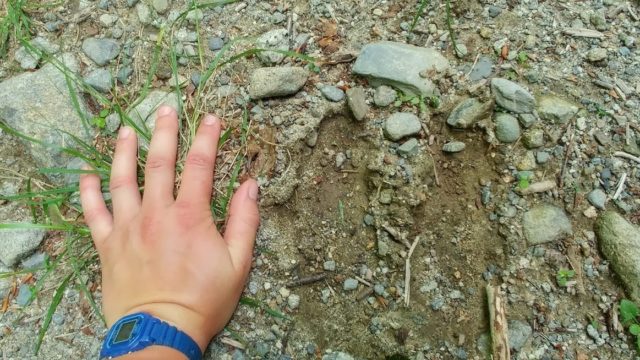
Since this last encounter, I have gone on to experience my first actual moose sighting in Baxter State Park, which was more incredible than I can put into words. I don’t have a picture, but I’m not worried about it, because it’s an experience I could never forget.
This sample of experiences I’ve shared with you reinforce what I previously referred to as the ‘complete interpretive immersion.’ My work follows me everywhere. After a day of programming, I reflect on the experience and imagine it from the participant’s point of view. What message did they take away from my program? What activity or concept resonated with them the most? How can I make this more relatable to them?
On my own time, I can’t help but ask nerdy nature questions like: What is that mushroom? What is making that sound? This is so cool! Or think: I can’t wait to show the kids this huge moose track I saw!
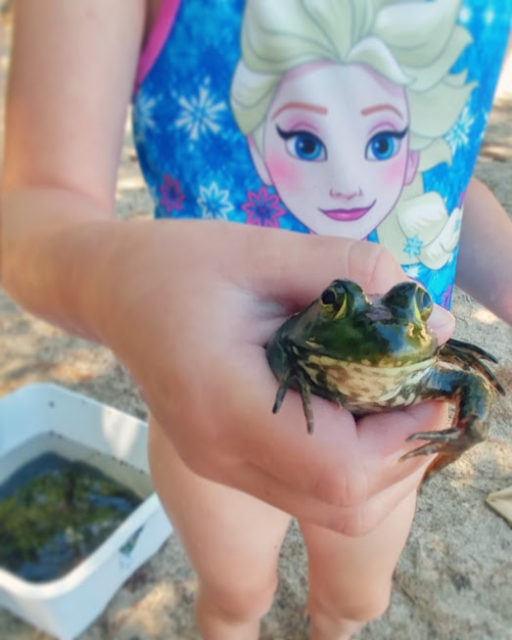
I have an incredibly awesome job. I will admit that the constant stream of questions entering my mind can be obnoxious when I just want to have a day to myself. Sometimes I just want to take a breath of fresh air, clear my mind, and take in the views without a care in the world, you know? But this job has pushed me to ask questions, to realize that there is always something new to learn – and why wouldn’t you want to learn something new? Curiosity is a gift and exploration is one of the best ways in which to use it.
My hope is that you take that next step – whatever it may be for you – and ask that question. Don’t allow yourself to get too comfortable, to get stuck in the mundane daily routine. Open your mind, go out into the world (nature preferably), and allow yourself to be immersed in the experience. Before you’ve even realized its happened, you’ll have a different perspective of the world and those annoying yet welcome questions will have steadily made their way into your thoughts.

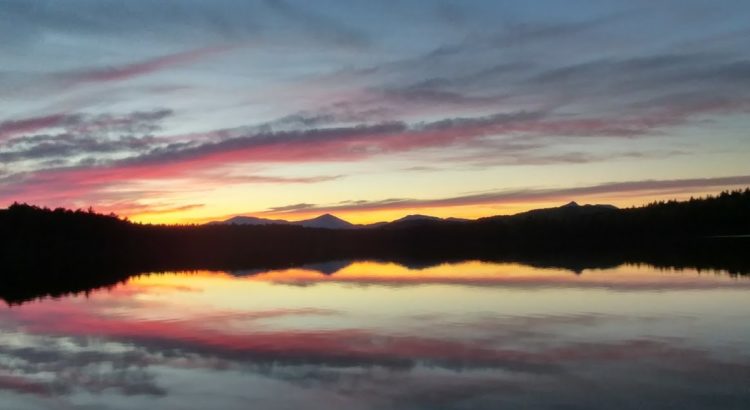
My family recently visited Lake Francis campground and had such a great encounter with the park’s Ranger , that I feel compelled to write! He was so happy to answer our questions about the area and surrounding sites that he made us want to explore that much more! We have been lucky enough to have fun across this fine man before and just wanted to let someone else know how he goes above and beyond his call of duty. The best part is that he does it with a smile! Unfortunately, I did not write down his name, but he was on duty the week of August 13-18th. If you go to the park, drop into the camp store and tell him again just how apps he is!Thanks again!☺
The Forgione and Misulia Families